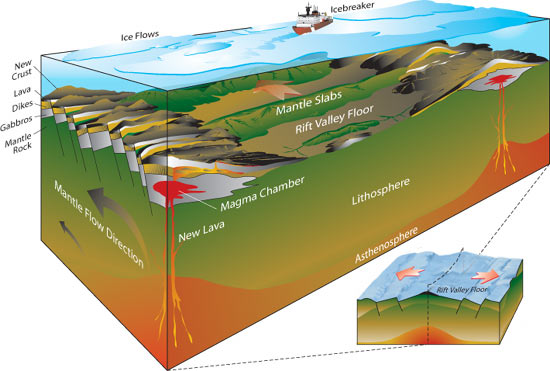| Image : Background on Gakkel Ridge, Arctic Exploration, and Hydrothermal Vents

Volcanic activity at mid-ocean ridges creates new seafloor crust that spreads outward to cover 70 percent of Earth's surface. Recent expeditions have led to the discovery of an entirely new type of mid-ocean ridge. Instead of two classes of ridges?fast-spreading and slow-spreading?there is now a third, ultraslow. Ultraslow-spreading ridges, which may make up one-third of the global ocean ridge system, have distinctive characteristics. Like other mid-ocean ridges, ultraslow ridges have areas where magma rises from the mantle and erupts at the seafloor to create new ocean crust. But in between, there are also amagmatic zones, where solid slabs of mantle rock rise directly to the seafloor. (Illustration by E. Paul Oberlander, WHOI)[back] |
Last updated: October 26, 2010 |

